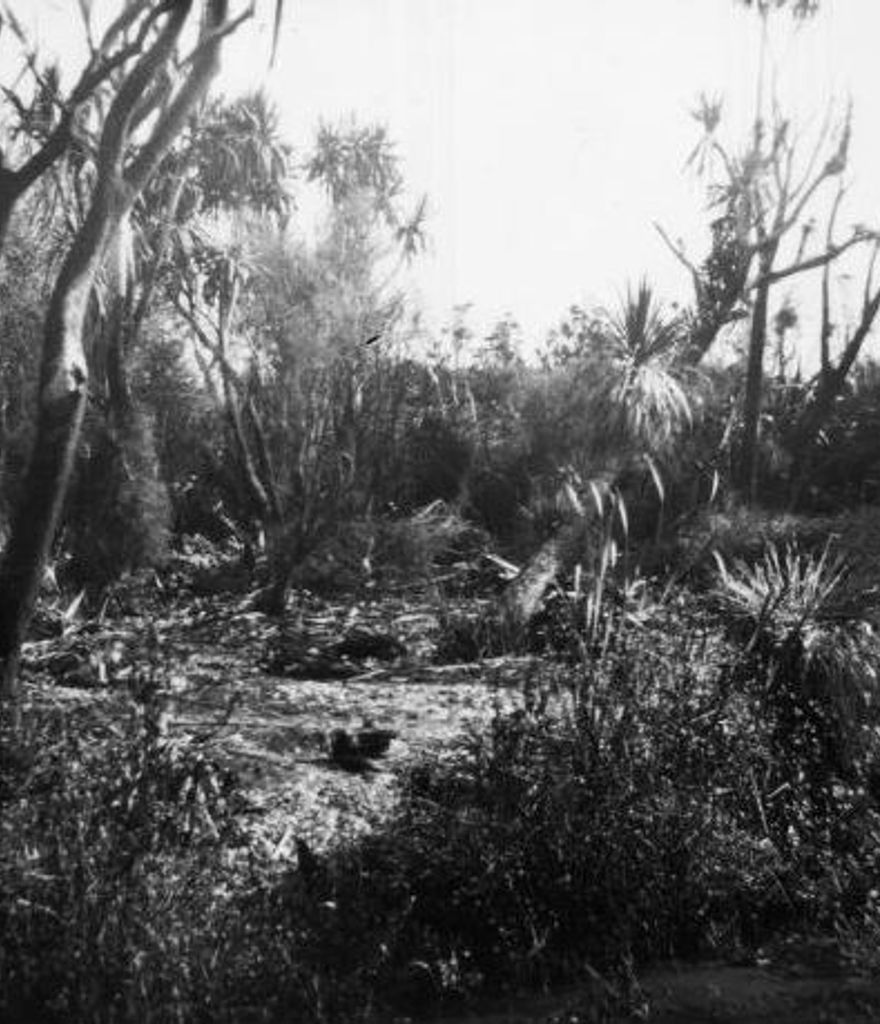This picture shows Mangaroa, artificial pa mound on an artificial island in Kaihuka swamp at north end of Lake Horowhenua.
Picture sourced from: http://timeframes.natlib.govt.nz
According to Mr. Rod McDonald in his book 'Te Hekenga; Early Days in Horowhenua' page 10:
At the lower end of Lake Horowhenua may be seen to-day,
two small islands, set some distance apart and covered with flax
and scrub. On the lake there are, or were, six islands altogether,
Waikiekie, Roha-o-te-Kawau, Waipata, and Puke-iti, at the lower,
or southern end, and Karapu and Namu-iti at the northern. With
Waikiekie and Roha-a-te-Kawau only, we are concerned for the
moment. Standing in the shallow water of the lake as they do.
these islands present something of a puzzle to the observer, since
there is no reasonable geological explanation for their being, and
one is therefore not surprised to hear that they are artificial.
The method of their construction has been described, but is
worthy of repetition. Strong stakes were first driven into the
muddy bottom of the lake, and interlaced with manuka, after the
form of the old Maori taiapa. 1 The circular space thus formed
was then filled in with sand brought out in basketfuls in canoes,
and the area of the islands was said to have been still further
extended by a platform built out from the sides. On the north-
western shore of the lake, opposite Waikiekie, may be seen a wide
scar]) into the hillside, now grassed over, but undoubtedly the place
from which the land for the islands was obtained.
Upon these island pas the Muaupokos felt reasonably safe.
Built a hundred yards or so from the nearest shore, they conceived
themselves secure from the pakcha's weapon. Only by canoe could
they be reached, and they had carefully hidden, or sunk, all the
canoes on the lake with the exception of a few which they had with
them. To make assurance doubly sure, however, they had driven,
just below the level of the water, a wide forest of stakes surround-
ing the islands, leaving only a narrow tortuous passage by which
a canoe might approach.

